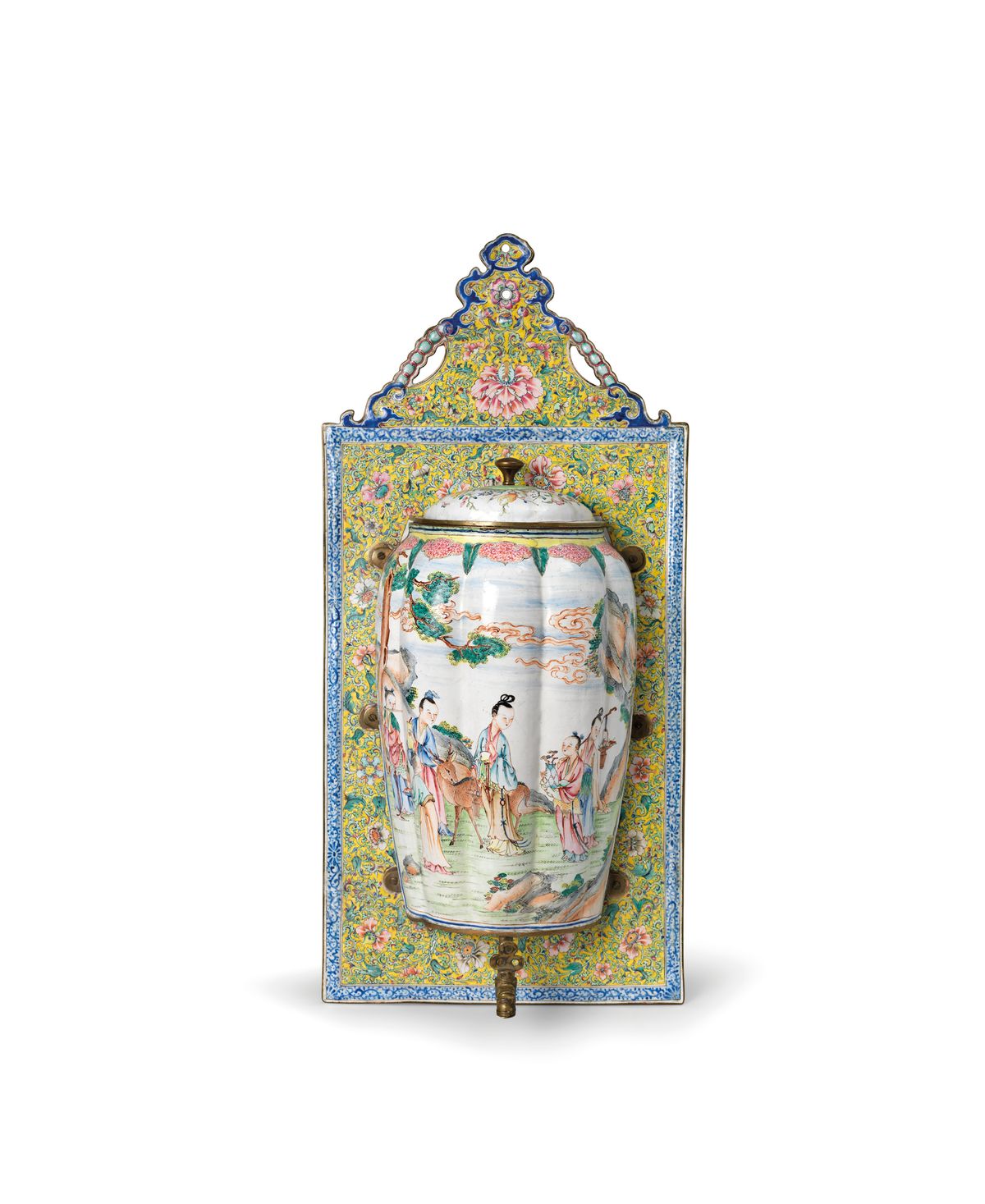The most recent catalogue produced by Jorge Welsh, China of all Colours: Painted Enamels on Copper, is a welcome addition to the existing literature on Chinese export art. Focusing on a relatively little known and studied area—enamels painted on copper—it provides a comprehensive survey of past works on the subject, a well documented article by Christian Jörg, and a rich catalogue subdivided in 93 entries illustrating more than 160 objects, mainly from the 18th century and collected in Europe and the Americas.
This area of study lacks the vast documentary evidence of the field of export porcelain. A few key references on the origin and subsequent development of the technique of enamelling on copper in China, customarily quoted when discussing the subject, have been integrated in the main introductory text or in the catalogue entries. In the general scarcity of new historical references, a quotation giving the earliest evidence (1728) of import of Chinese painted enamels (to The Hague), shared by Patricia Ferguson, is given prominence. Jörg’s essay also provides new documentary evidence from the records of the Dutch East India Company (VOC), as well as from inventories of private trade. In addition to the official references to copper smuggling and the difficulty in exporting copper items, which place the scarcity of orders made by VOC directors in a wider economic perspective, particularly interesting are the lists of personal possessions of painted enamels, imported as private trade, and the results of auction sales. These contribute a few dates to a still incomplete chronological framework but, most importantly, clearly show the dominant taste of Dutch consumers (who were mainly interested in standard tea and coffee services), while giving an indication of the market prices, often very similar to corresponding porcelain pieces.
The catalogue section includes a wide repertoire of the most traditional shapes executed in painted enamels on copper, such as tablewares (tea pots, tea caddies, cups, ewers and basins, trays and plates) and several types of container and box, alongside other less popular forms, such as trays for tables, a wall fountain, a candelabrum, a set of pendants and bracelets. The most finely executed pieces are the two plaques with European scenes that may have been produced in Guangzhou as tribute to the Qing court. Clear catalogue entries illustrate the objects in detail, providing relevant explanation on the shapes, when derived from European models, and the iconographic motifs depicted. The footnotes include exhaustive references to comparable pieces in several collections in Europe, Asia and the Americas.
In recent years, Chinese painted enamels have been discussed from a conservation perspective at Biennial Experts’ Meetings on Enamel on Metal Conservation organised by the ICOM-CC Enamel Groups in 2012 and 2014. Enamel analysis and conservation is addressing new research questions that may lead to clarifying the connection between enamelled porcelain and enamels on copper, one of the issues that is also raised in the catalogue. Chinese painted enamels also increasingly appear on sales of Asian art, and more in-depth discussion has been provided in the last few years by dealers such as Roger Keverne.
In China, scholars have been researching Chinese painted enamels within the wider discourse of technological exchanges between Europe and China.
In addition to the works mentioned in the catalogue, relevant research looking at enamel and glass technology at the Qing court was undertaken by Xu Xiaodong (2010) and by Julia Curtis (2009), who both make reference to archival sources. Most recently, Cultural and Commercial Exchanges between China and the West, edited by Guo Xuelei and Xie Zhen (2016), on armorial porcelain, includes a section on the origin and early development of Guangzhou painted enamels and explores the relationship with enamelled porcelain, arguing that both groups were decorated in the same workshops in Guangdong.
In conclusion, this catalogue will certainly become one of the standard references on Chinese painted enamels and its clear summary of previous works and a comprehensive mapping of key collections should encourage further research in the fields of technology, consumption and cultural exchange.
• Luisa Mengoni is the head of the Victoria and Albert Gallery in Shenzhen, China
China of All Colours: Painted Enamels on Copper
Luísa Vinhais and Jorge Welsh, eds
Jorge Welsh, 312pp, £120 (hb)


